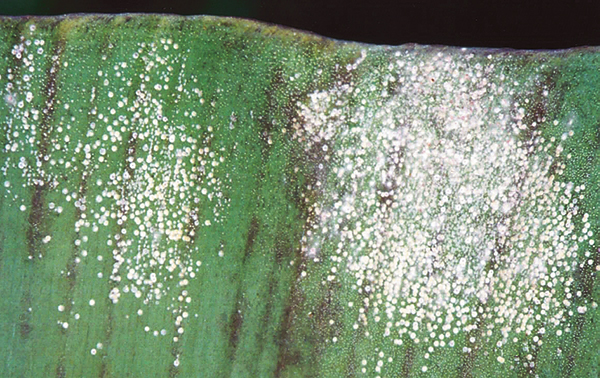Spots on leaves
Banana freckle
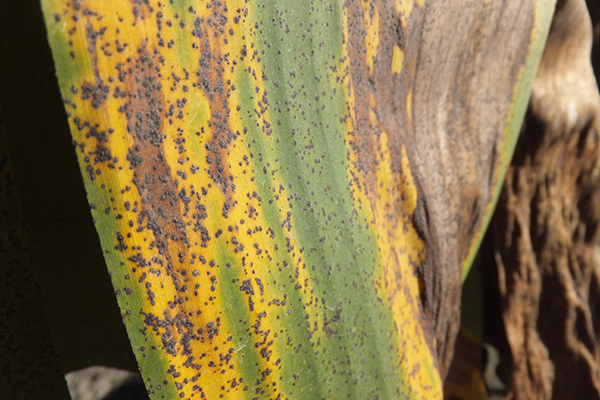
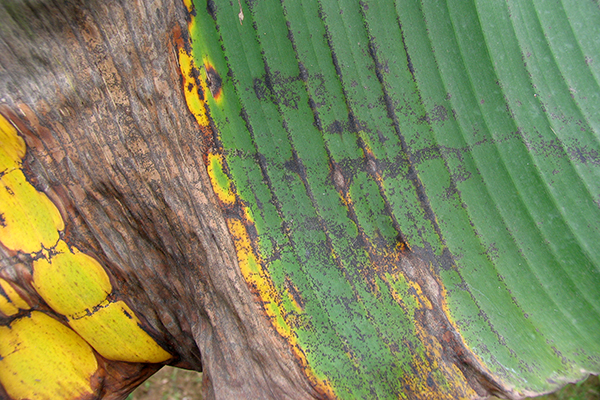
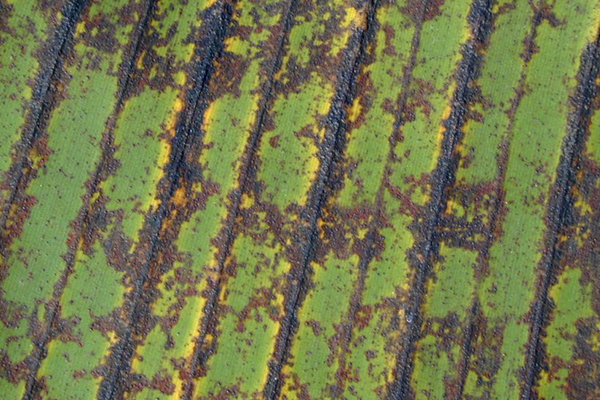
Biosecurity Alert
Cause: Banana freckle is a leaf and fruit spotting disease of banana and is caused by several species of the fungus Phyllosticta, some of which are exotic to Australia. The disease that affects Cavendish bananas is caused by the race Phyllosticta cavendishii, with the first incursion detected in Australia’s Northern Territory in 2013. This race can also affect non-Cavendish varieties.
Symptoms: The most distinguishing symptom of the disease are dark raised spots, and a sandpaper feel to infected (spotted) leaves and fruit. On fruit, individual spots first appear as minute, reddish-brown flecks surrounded by a halo of dark-green, water-soaked tissue.
Biosecurity: Both commercial and backyard banana growers should regularly monitor their banana plants for symptoms of the disease. If you see symptoms or anything unusual call Biosecurity Queensland on 13 25 23 or the Exotic Plant Pest Hotline on 1800 084 881 immediately.
Movement restrictions are in place to stop the movement of plants, plant material and fruit from infected or suspect premises. Further, Queensland, New South Wales and Western Australia prohibit the entry of banana fruit and plant material from the Northern Territory, with quarantine checkpoints at some state borders.
More info:
Plant Health Australia
Queensland Government
Northern Territory Government
Australian Government
ABGC
Symptoms of banana freckle on banana fruit (Better Bananas)
Banana rust
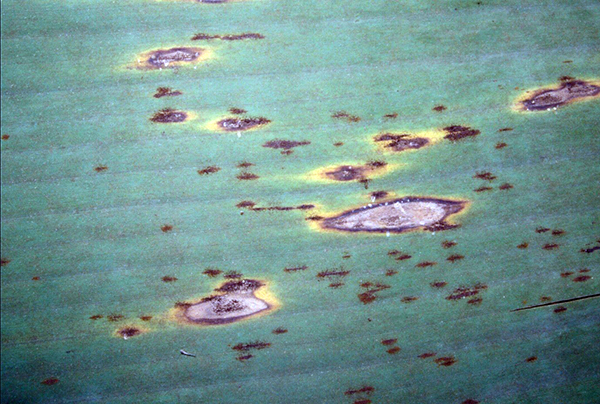
Cause: The fungus Uredo musae. A disease with limited distribution, it is seen within plantations near tree lines and buildings which reduce spray coverage. Banana rust occurs predominantly on older leaves. Therefore fungicide applications should be applied via ground rig.
Solution: The leaf spot program should provide adequate management of rust.
Black Sigatoka
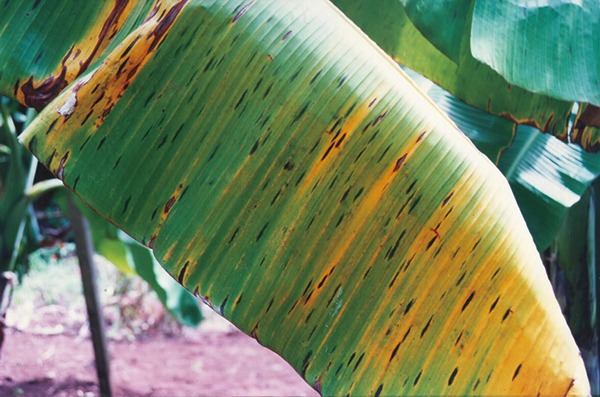
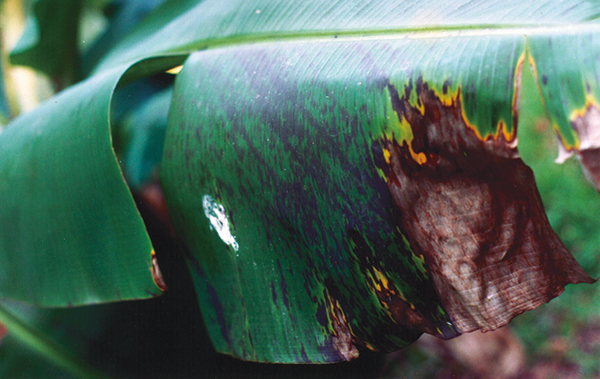
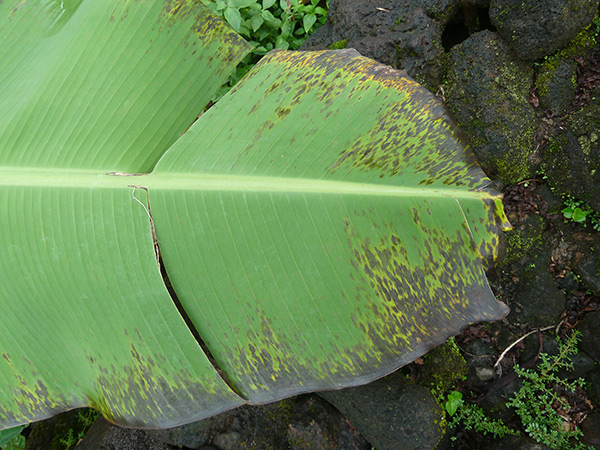
Biosecurity Alert
Cause: The fungus Pseudocercospora fijiensis (formerly known as Mycosphaerella fijiensis). In the early stages of development, black Sigatoka appears as rusty red streaks up to 5 to 15mm. These symptoms are more obvious on the underside of leaves. Streaks enlarge over time to become spots.
Solution: If you suspect black Sigatoka you must notify Biosecurity Queensland immediately (13 25 23). It is a notifiable disease and you must report any suspicious plants.
Biosecurity: Importation of all banana material (fruit, leaves, planting material) is prohibited without approval. A biological barrier is now established, reducing the number of susceptible bananas between the Torres Strait/Papua New Guinea, where the disease exists and the Far North Queensland banana production areas.
More info:
Queensland Department of Primary Industries
Plant Health Australia
New South Wales Department of Primary Industries and Regional Development
Cordana leaf spot
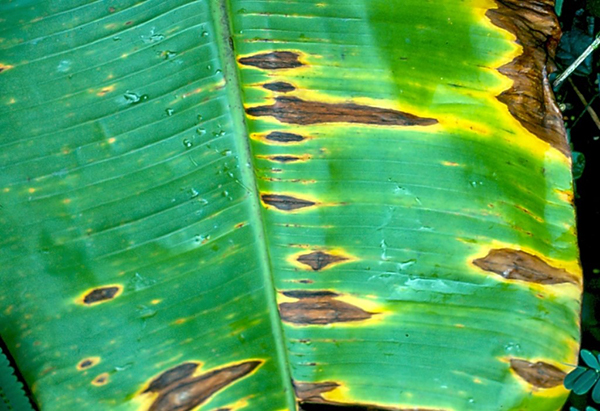
Cause: The fungus Neocordana musae. Large numbers of spores produced on the underside of lesions are spread during wet windy weather. The fungus mainly enters the leaf through injuries. It is common on plants weakened as a result of water-logging or drought.
Solution: The leaf spot program provides adequate management of cordana leaf spot.
Herbicide drift
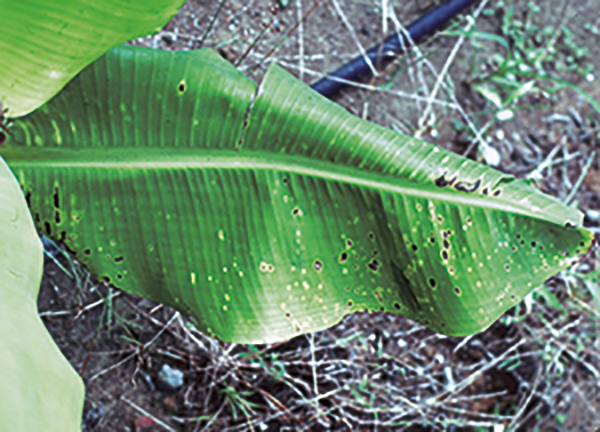
Cause: Spray drift of contact herbicides such as paraquat onto the plant.
Solution: Avoid spray drift onto leaves. Affected plants should grow out of the symptoms.
Leaf speckle
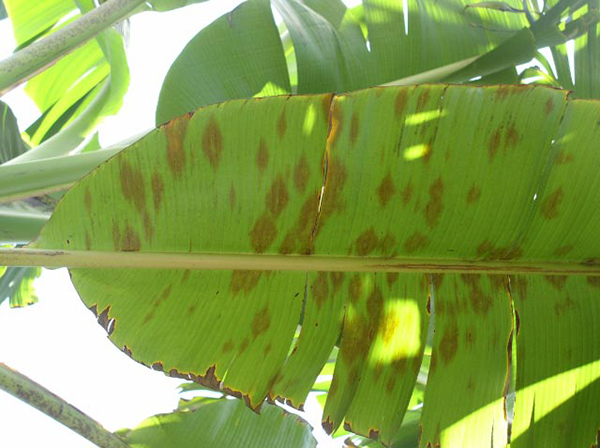
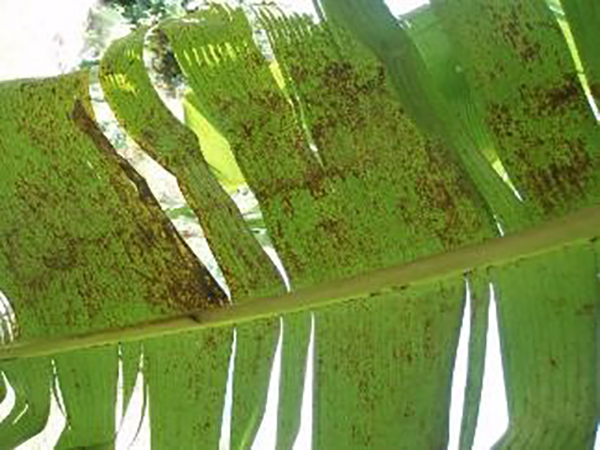
Cause: Several fungi including Mycosphaerella musae (banana leaf speckle or common speckle), and Ramichloridium spp. (tropical leaf speckle) can produce a range of symptoms. These fungi are spread by wind in moist weather and are more tolerant of cool conditions than the leaf spot fungus.
Solution: The leaf spot management program normally provides control of speckle. If better control is needed, apply fungicides by ground rig which targets the underside of leaves.
Leaf spot (yellow Sigatoka)
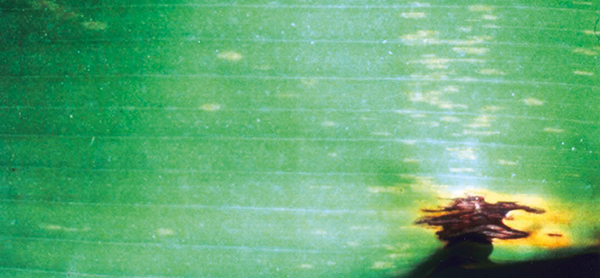
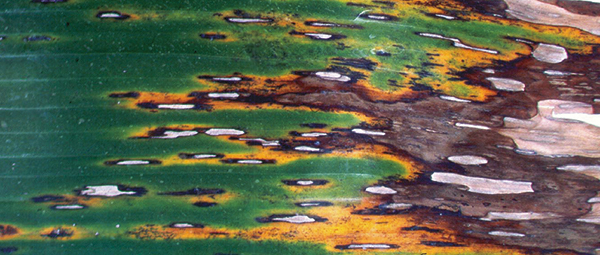
Cause: The fungus Pseudocercospora musae (formerly known as Mycosphaerella musicola). Early stages of development appears as light yellow streaks 1 to 2 mm long. Streaks enlarge in time to become spots.
Solution: Ensure the leaf spot management program is carried out effectively. The program should include cultural (deleafing, drainage) and chemical (fungicides, oils, application timing, coverage) practices.
More info:
Better bananas – yellow Sigatoka general information factsheet
Better Bananas – yellow Sigatoka fungicide options factsheet
Mite damage
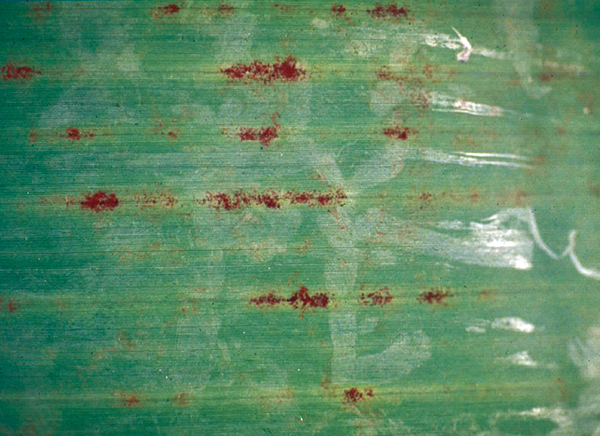
Cause: Feeding by the banana spider mite, Tetranychus lambi, or the two-spotted mite, Tetranychus urticae, causes tissue to die, resulting in bronzed areas under leaves.
Solution: Treatment is usually not necessary because predatory beetles Stethorus spp. maintain adequate natural control. If these beetles are not present and monitoring results show the level of damage is severe, treat with an appropriate miticide. Ensure adequate coverage to the underside of leaves.
More info:
Queensland Department of Primary Industries
Southern cordana leaf spot
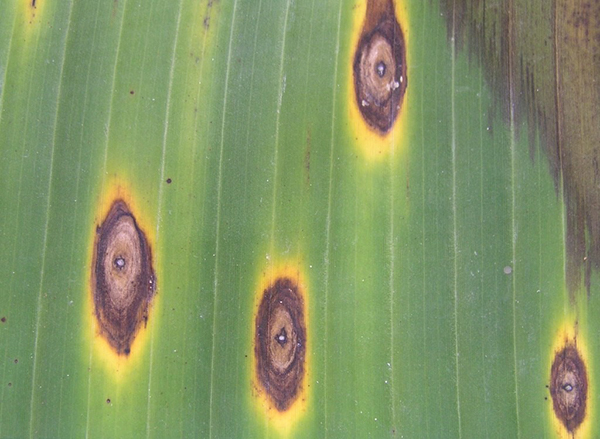
Cause: The fungus Cordana johnstonii. This disease is present in the tropics and distribution is limited. It is frequently seen on unsprayed Ducasse plants, and in areas of high elevation under cooler weather conditions. Lesion size is significantly smaller than Cordana musae, approximately 10 by 15 mm. As with Cordana musae, spores form abundantly on the underside of leaves on mature lesions.
Solution: The leaf spot control program should manage this disease.
Spiralling whitefly
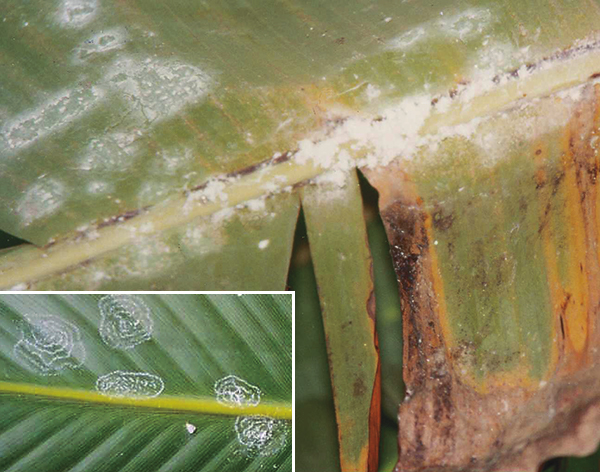
Biosecurity Alert
Cause: The insect spiralling whitefly (Aleurodicus dispersus). The white adults and nymphs occur on the underside of the leaf. The name comes from the white trail in which the eggs are laid. Its sap-sucking reduces vigour, and the production of honeydew supports the growth of sooty mould which can cover fruit and leaves.
Biosecurity: Report all suspicious symptoms immediately to Biosecurity Queensland (13 25 23).
More info:
Transparent scale
